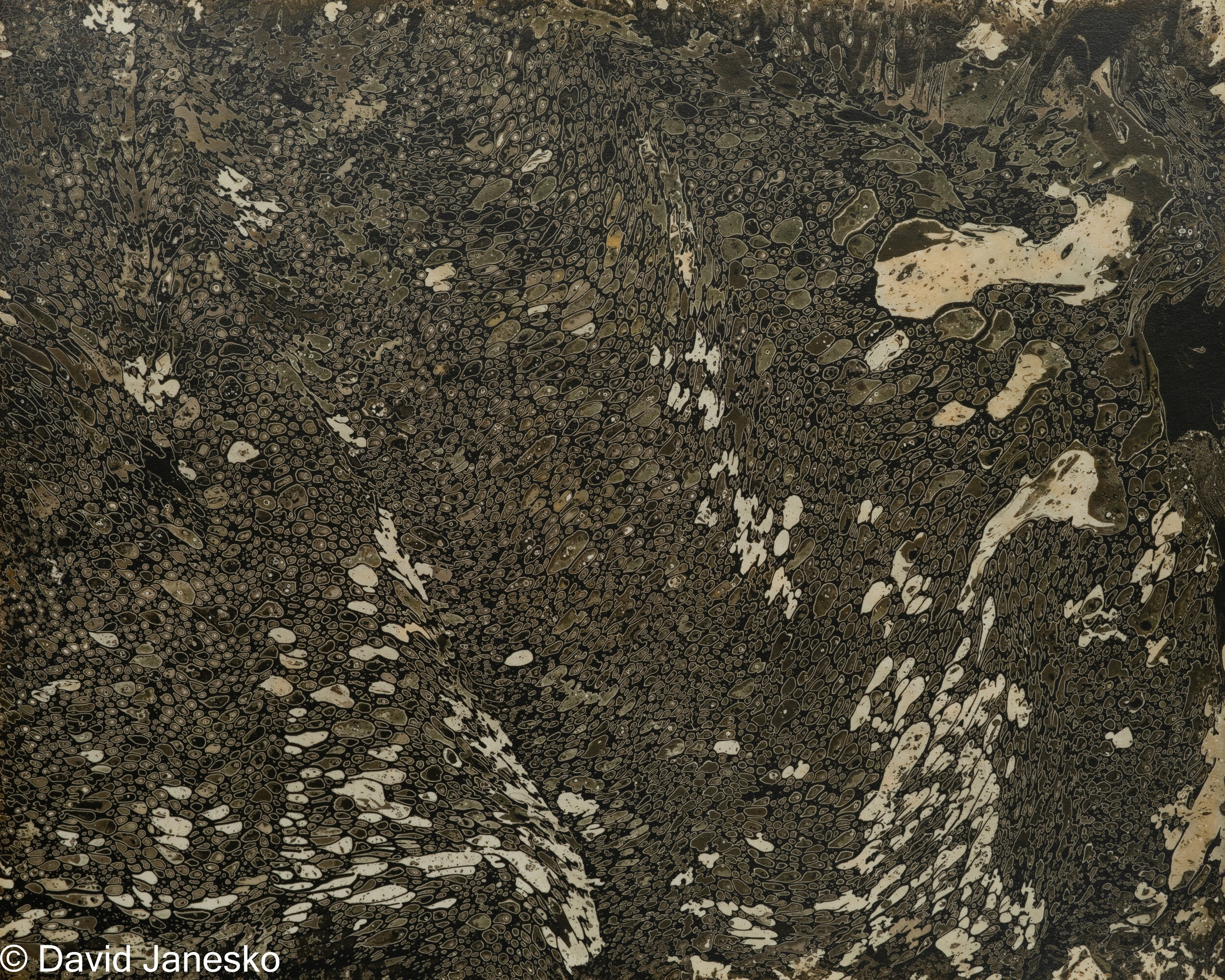
Boundary Between Living and Non-Living
2018-2020
Cameraless photographic chemical paintings on silver gelatin paper.
"All life is organized as cells. Physical compartmentation from the environment and self-organization of self-contained redox reactions are the most conserved attributes of living things, hence inorganic matter with such attributes would be life’s most likely forebear."*
This series is exploring some of the same ideas as Landscape Evolution, but at smaller scale. In the Boundary Between Living and Non-Living I am focusing on the cell. The first protocells were simple lipid (oils) membranes, similar to the spheres and slicks that forms when oil and water are mixed. A cell divides space into an "inside" that is both in conflict-with and reliant-on the "outside". The complex forms and processes of proto-life required a stable environment in which to develop and the these lipid membranes became a buffer against the chaos of the world beyond their boundary's. The lipid proto-cell became a zone of relative calm. Ironically, this duality set off a positive feedback, as the difference between the internal and external environments became more pronounced, the electrochemical potential between each side increased, allowing energy to flow inside and do work, building complexity and further separating internal and external. The photographs in this series were created using a process based on this story. I used various oils to create resists or masks on fully exposed photographic paper, by cycling the paper between various types of commercial and homemade photographic chemistry I am able to create complexity within these cellular forms.
*Martin, William; Russell, Michael J. (29 January 2003). "On the origins of cells…". Philosophical Transactions of the Royal Society.

















